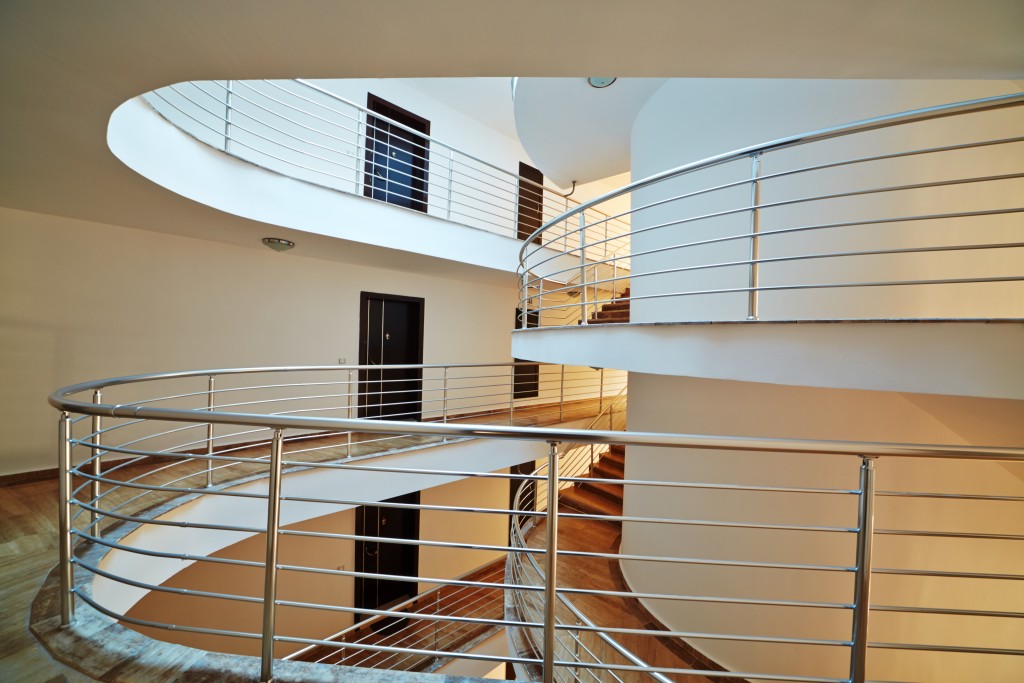- Choose laminate flooring thickness based on expected foot traffic and consider your store’s aesthetic preferences.
- Set a budget that includes both laminate and installation costs, and pay attention to AC ratings for durability.
- Professional installation is recommended for a flawless look, and regular maintenance is vital to preserve laminate flooring.
- Protect against moisture, invest in furniture pads, and promptly address damage for long-lasting laminate flooring in your retail store.
Laminate flooring has gained immense popularity recently for its durability, affordability, and aesthetic appeal. If you’re a physical retail store owner looking to revamp your interior, laminate flooring can be an excellent choice.
However, selecting the right laminate flooring for your store can be daunting with many options. To help you make an informed decision, this article compiled a comprehensive guide with the best tips for choosing laminate flooring for your retail space.
Choosing the Right Laminate Flooring
You must choose the right kind of laminate flooring for your store. Here are some tips:
Assess Your Store’s Foot Traffic
Before diving into the world of laminate flooring, evaluating the foot traffic in your retail store is essential. Laminate floors come in varying thicknesses, and the thickness you choose should be directly related to the expected level of foot traffic.
For high-traffic areas like entrances and checkout lanes, it’s best to opt for thicker laminate flooring, around 12mm or more. Thicker laminate is more durable and can withstand the wear and tear of heavy foot traffic without showing signs of wear prematurely.
Consider Your Store’s Aesthetic
Your store’s interior design and overall aesthetic should guide your choice of laminate flooring. Laminate flooring comes in a wide range of colors, patterns, and textures, allowing you to create the perfect ambiance for your store.
If you have a modern and minimalist store design, sleek and glossy laminate options may complement your aesthetic. On the other hand, for a more rustic or traditional ambiance, laminate with a wood or stone texture can be a great choice.
Evaluate Your Budget

Laminate flooring offers a significant advantage over hardwood or stone alternatives – affordability. With its cost-effective nature, laminate flooring provides a budget-friendly option without compromising on style or durability. However, prices can still vary significantly within the laminate category. Therefore, it’s crucial to set a budget for your flooring project and stick to it.
Consider the cost of the laminate itself and the installation expenses. Some laminate flooring options come with easy-to-install click-lock systems that save you money on installation costs. Factor in all these expenses to make an informed decision that aligns with your budget.
Pay Attention to AC Ratings
Laminate flooring is classified by AC (Abrasion Class) ratings, which indicate its durability and suitability for various settings. For a retail store, choosing laminate flooring with a high AC rating, typically AC3 or higher is advisable.
AC3-rated laminate is suitable for commercial use and can withstand the daily wear and tear your store will experience. Remember that higher AC-rated laminates are more durable but might come at a slightly higher price point.
Don’t Forget About End Molding
End molding is an often overlooked but crucial component when installing laminate flooring in retail spaces. It provides a finishing touch to the edges of your flooring, ensuring a seamless and polished look. The right end molding can also help prevent tripping hazards for your customers.
When selecting end molding, ensure it matches the color and texture of your laminate flooring. This cohesive look ties the room together and enhances the overall aesthetic of your store. Remember that end molding is not just a functional element; it’s also an integral part of your store’s design.
Installation and Maintenance
The installation and maintenance of your laminate floor should not be neglected. Here are some tips for you:
Professional Installation Is Key
Although laminate flooring can be installed with relative ease, it is highly recommended to enlist a professional installer’s services, particularly in commercial spaces such as retail stores. This ensures optimal results regarding quality, precision, and overall aesthetics.
Professional installation ensures that the flooring is laid correctly, preventing issues such as gaps or unevenness that can affect the appearance and longevity of your laminate flooring. Additionally, professional installers are experienced in dealing with challenging areas like corners and transitioning between different types of flooring, making your store’s flooring appear seamless and flawless.
Regular Cleaning and Maintenance

Establish a regular cleaning and maintenance routine to keep your laminate flooring looking pristine. Laminate is relatively low-maintenance compared to other flooring options, but it still requires care to retain its beauty.
Use a soft-bristle broom or a vacuum cleaner with a soft brush attachment to remove dirt and debris daily. Use a damp mop with a manufacturer-recommended laminate floor cleaner for deeper cleaning. Avoid excessive water or abrasive cleaners, which can damage the laminate’s surface.
Protect Against Moisture
Laminate flooring is susceptible to moisture damage, so protecting it from water exposure is crucial. In areas prone to spills or high humidity, consider using moisture-resistant laminate flooring or installing a moisture barrier underneath the laminate.
Also, place doormats at entrances to reduce the amount of moisture and dirt tracked onto the flooring. Promptly clean up any spills to prevent water from seeping into the seams and causing damage.
Invest in Furniture Pads
Invest in furniture pads or felt protectors for the legs of your display racks, shelves, and other store furniture to prevent scratches and scuffs on your laminate flooring. These pads create a protective barrier between the furniture and the floor, minimizing the risk of damage.
Regularly inspect and replace these pads as they wear down to ensure ongoing protection for your laminate flooring.
Address Damage Promptly
Even with proper care, accidents can happen, and your laminate flooring may get damaged. It’s essential to address any damage promptly to prevent it from spreading and becoming more significant.
For minor scratches or chips, laminate flooring repair kits are available and can be used to conceal the damage. If the damage is extensive or beyond your repair capabilities, consult a professional to assess the situation and recommend the best action.
Choosing the right laminate flooring for your physical retail store is a significant decision that can impact your space’s aesthetics and functionality. With the right laminate flooring and proper care, your retail store can create a lasting impression on customers while withstanding the rigors of daily operations.


